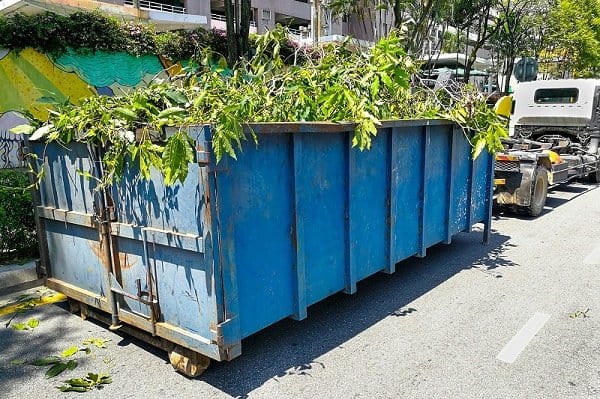- BY Evelyn
- POSTED IN Dumpster Rental
- WITH 0 COMMENTS
- PERMALINK
- STANDARD POST TYPE
Renting a dumpster can be a great way to save time, energy, and potentially money while working on a renovation or remodeling project of any size.
Being able to store and dispose of waste, debris, and excess materials in a container while working on site will ensure a safe workspace for all. Dumpster rental companies can save you a lot of time and energy by providing not only a dumpster for your waste but also offering delivery and pick-up services.
This means that all debris can be disposed of responsibly and taken care of without you having to add extra people to the job.
When you look into dumpster rental, there are several things you have to consider to make sure you get the right size for your needs.
What Size Dumpster Do I Need?
Dumpster rental companies have dumpsters of varying sizes that you can hire based on your needs.
The best way to go through dumpster rental is by estimating what size dumpsters you need before contacting the dumpster company. Trying to work out what size of a container you need will help you save money in the long run, as dumpsters are made to hold certain volumes and weights of debris.
If you overfill a dumpster, the rental company will add overage fees to your final bill.
These overage fees can be from $50 to $100, but it is not just the additional expense that you have to worry about. When dumpsters become too full, the dumpster company is not able to safely remove them from your site, which can delay your work progress.
Dumpsters are categorized by the volume of debris they can hold. For example, a 40 yard dumpster can hold 40 cubic yards of debris.
One cubic yard is 3 x 3 x 3 feet, which is roughly the size of a standard kitchen stove.
With this in mind, a 40 yard dumpster can hold 40 kitchen stoves of debris.
However, it is not just the volume of a dumpster that you need to consider.
What Are Weight Limits?
Regardless of what kind of yard dumpster you choose, there will be specific weight limits that you have to abide by.
Each dumpster has a different weight limit, which is a factor in how much debris and waste they can hold. Weight limits have two meanings when it comes to dumpsters:
- The weight limit of the actual container
- The weight limit allowed by the company
While a large dumpster like a 30 yard or 40 yard dumpster might be able to hold a lot of weight from debris, the dumpster company has likely set restrictions on what they can handle. This weight limit is probably a small percentage of the actual limits of the container and has been set for safety.
You must understand the weight limits allowed by a dumpster company, as this will prevent you from overfilling the container. This will not only result in overage fees but will also prevent the dumpster truck from being able to remove the container from your site.
How Much Debris Fits In Each Yard Dumpster?
To ensure that the dumpster truck can safely pick up the container on your site and remove the waste from it, you will need to abide by the weight limit that has been set by the company.
Dumpsters are categorized by the volume yard waste they can hold, which means that a 30 yard container can hold 30 cubic yard waste.
This is quite hard to measure and is just as difficult to translate into physical debris such as wood, concrete, flooring, or other materials from your project.
To help you determine what size dumpster you will require for your project, we are going to highlight how much of certain kinds of debris each dumpster can hold safely.

Dumpster Weight Limits
10 Yard Dumpster
A 10 yard waste disposal commonly has a weight limit of 2 to 3 tonnes or 4,000 to 6,000 pounds.
This translates to:
- 65 to 90 square feet of concrete
- Up to 2,400 square feet of roofing
- Around 35 to 45 square feet of yard waste
- Up to 400 square feet of household junk
20 Yard Dumpster
A 20 yard container has an average weight limit of 2.5 to 3.5 tonnes or 5,000 to 7,000 pounds.
This translates to:
- 80 to 100 square feet of concrete
- Up to 2,800 square feet of roofing materials
- Around 14 square feet of yard waste
- Up to 475 square feet of household junk
30 Yard Dumpster
These containers have an average weight limit of 4.5 to 5 tonnes or 7,000 to 10,000 pounds.
This dumpster can be used for:
- 110 to 155 square feet of concrete
- Up to 4,000 square foot of roofing
- Around 20 square feet of yard debris
- Up to 680 square feet of household junk
40 Yard Dumpster
A 40 yard dumpster is one of the largest containers available to rent. 40 yard containers have a weight limit of 6 to 8 tonnes or 12,000 to 16,000 pounds.
If you require a 40 yard dumpster, it can be used for:
- 190 to 250 square feet of concrete
- Up to 6,400 square feet of roofing debris
- Around 30 square feet of yard debris
- Up to 1,085 square feet of household waste
Dumpster Sizes Vs. Weight
Being able to pack as much into your dumpster may be an excellent way to get more for your money, as long as you do not go over the weight limit.
The key to removing a lot of debris at once is the organization, which means using trash bags and similar items to pack the same kinds of debris together so more can be packed on top.
Before doing this, make sure to check with the company whether they accept waste in trash bags or whether everything needs to be loose.
Remaining aware of the weight limits that come with each size dumpster will make the whole rental process easier for you. Not only will remaining aware of the weight prevent you from overfilling the container, which can be an expensive mistake to make, but it will also allow you to find the right size dumpster in the first place.
When looking into the best dumpster for your needs, do not forget to enquire about the weight limit that’s allowed by the company.
While the dimensions and volume of a dumpster is an important thing to consider, the weight is just as valuable when it comes to estimating what it can be used for and how much you can throw away without being overcharged.

 610-679-8449
610-679-8449